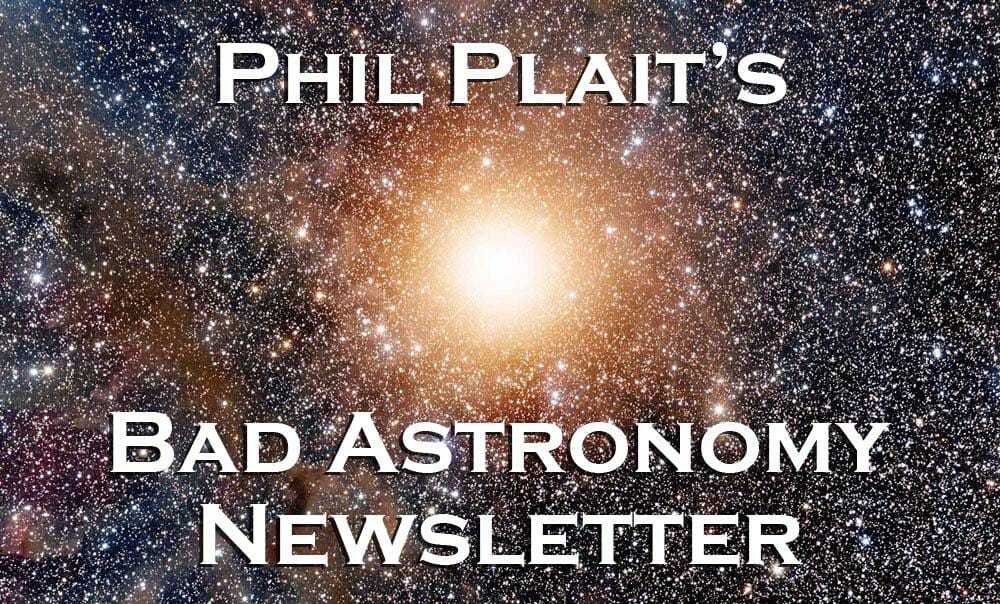- Bad Astronomy Newsletter
- Posts
- The spectacular Sombrero galaxy as seen by JWST
The spectacular Sombrero galaxy as seen by JWST
New view on an old favorite reveals a warmly glowing ring of eructated dust
November 26, 2024 Issue #805
Pic o’ the Letter
A cool or lovely or mind-bending astronomical image/video with a description so you can grok it
JWST delivers again! This time it’s a splashy and weird image of the gorgeous nearby galaxy M 104, aka the Sombrero Galaxy. Check this out:

The Sombrero in mid-infrared light. Credit: NASA, ESA, CSA, STScI
[Click to engrandenate; much larger versions are available.]
I’ve said it before and I’ll say it again: whoa.
So just what are you seeing here?
This image was taken using JWST’s Mid-Infrared Instrument, or MIRI. It detects light that has much longer wavelengths than our eyes can perceive, and this image combines light at 7.7 microns (shown in blue), 11 microns (green), and 12 microns (red)—the reddest light you can see is about 0.75 microns, for comparison.
Galaxies contain a lot of stuff we call dust, which is a mix of complex carbon-based molecules (which is essentially soot) and silicaceous (rocky) grains. These materials are created when stars die, swelling into red giants or supergiants, and the stars blow out huge winds of carbon and silicon that form the grains. The technical term for this dust is polycyclic aromatic hydrocarbons, or PAHs, and they form clouds of matter that can be seen as small, dense clumps or long filaments. PAHs emit infrared light at specific wavelengths, including 7.7 and 11.3 microns, so they appear bright in the JWST image.
So, you’re looking at cosmic dust belched out in the last breaths of dying stars.
And the ring? Well, the Sombrero is a weird galaxy. It looks a lot like a spiral galaxy, with a flat disk and central bulge of stars. We see it very nearly edge-on, so in visible light (the kind of light we see) it does look a lot like a sombrero. There’s a classic Hubble image of it that is downright spectacular, so here it is compared to the JWST image:

JWST (top) and Hubble (bottom) view of the Sombrero Galaxy. Credit: NASA, ESA, CSA, STScI, Hubble Heritage Team (STScI/AURA)
Ah! There you can see the galaxy’s disk of stars and dust, especially at the edge, where we see a ton of dust clouds; they’re opaque to visible light so they’re silhouetted against the disk of stars.
For a long time people thought this was a spiral galaxy much like our own, but there are odd differences that make this classification a lot hazier. It has a huge central bulge, one that just dominates the inner part of the galaxy. That’s unusually big for a spiral (like our Milky Way, for example). The dust lane is also incredibly thick, which is weird. What’s going on?
Most likely the Sombrero is an elliptical galaxy, like a huge cosmic cotton ball. These are usually round or (American) football shaped, and have very little dust. But at some point in the past, probably around 3.5 billion years ago, it collided with a smaller disk galaxy that did have a lot of dust in it. That galaxy got ripped to shreds by the bigger elliptical galaxy’s gravity, which we now see as the disk of dust around it. That would explain the JWST image as well, since dust clouds are usually seen all throughout a spiral galaxy’s flat disk, and not just in a ring. I’ll note that a similar infrared image was released years ago, taken by the Spitzer Space Telescope in shorter wavelengths. Spitzer was a fine telescope, but much smaller than JWST, so the details in the image aren’t as obvious.
The bright core is interesting, too. There’s a lot of hot gas there, which means something is heating it. Observations from the 1990s indicated there’s probably a huge black hole there, one with a billion times the Sun’s mass. As matter falls in it gets infernally hot, and the radiation blasted away from it is what’s heating the gas around it. That’s the bright material we see right in the very center (the black hole is far too small to be seen at this scale).

Subscribe to Premium to read the rest.
Become a paying subscriber of Premium to get access to this post and other subscriber-only content.
Already a paying subscriber? Sign In.
A subscription gets you:
- • Three (3!) issues per week, not just one
- • Full access to the BAN archives
- • Leave comment on articles (ask questions, talk to other subscribers, etc.)


Reply